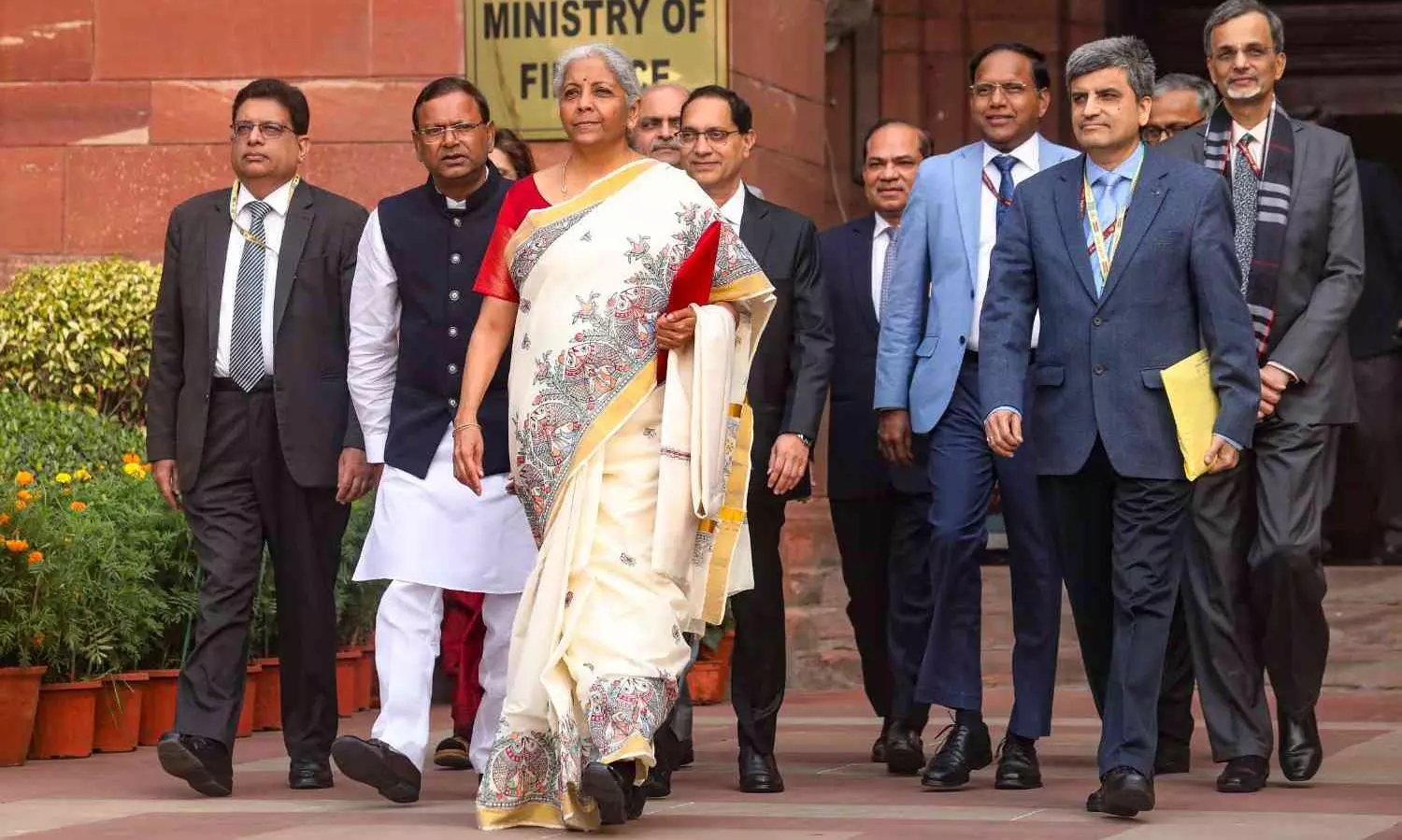
Budget | FM retains firm hold on fiscal discipline; ball now in RBI's court?
FRBM offers RBI flexibility to manage inflation within framework of fiscal policy; how central bank works now to rein in inflation will be keenly watched

Fiscal discipline has more or less been a mantra of the Narendra Modi government, and Budget 2025-26, presented on Saturday (February 1), kept to the stance.
Union Finance Minister Nirmala Sitharaman's eighth budget set an ambitious fiscal deficit target of 4.4 per cent of GDP. This compares favourably with the previously set medium-term goal of 4.5 per cent by 2025-26.
The revised estimates for fiscal deficit in 2024-25 stood at 4.8 per cent, which again was lower than the budgeted 4.9 per cent.
Increase in expenditure
Even better news, the lower fiscal deficit comes in despite a 6.9 per cent increase in expenditure to Rs 50.63 lakh-crore for 2025-26, against the revised estimates of Rs 47.16 lakh-crore for 2024-25.
Also read | What gets costlier, what is cheaper?
Budget 2025-26 emphasises fiscal consolidation, deficit reduction, expenditure rationalisation, and debt management as non-negotiables. It displays a careful juggling act, balancing the need for fiscal discipline with the need to address socio-economic priorities.
It describes measures to bolster non-tax revenues, dividends from the Reserve Bank of India (RBI), banks and public sector companies. These are expected to generate Rs 5.83 lakh-crore the coming fiscal, marking a 10 per cent increase from the current fiscal.
Reining in debt
Central Government debt is expected to remain on a declining path as a percentage of GDP.
Primary deficit (fiscal deficit excluding interest payments) has also been reduced to 0.8 per cent of GDP, from 1.3 per cent in 2024-25 RE (revised estimates).
Revenue deficit for 2025-26 is estimated at 1.5 per cent of GDP, reduced from 1.9 per cent in 2024-25 RE.
Effective revenue deficit (excluding capital asset creation grants) is projected to fall to 0.3 per cent of GDP, ensuring better expenditure quality.
FRBM roadmap
The Fiscal Responsibility and Budget Management (FRBM) targets a sustained fiscal consolidation strategy over the next six years. A key feature of FRBM is that it provides the RBI with the flexibility to manage inflation effectively within the framework of fiscal policy. The ball now, therefore, may be in the central bank's court to rein in inflation, which has been tending higher in recent quarters.
From 2026-27 onwards, the government aims to keep the fiscal deficit each year at a level ensuring declining debt-to-GDP ratio.
Also read | No income tax up to Rs 12 lakh: Know the revised slabs under new regime
The Budget 2025-26 underscores fiscal prudence, with a clear focus on reducing deficits, rationalising expenditure, and managing borrowings efficiently.
It signals that the government remains committed to keeping debt under control while prioritising capital investments to sustain long-term economic growth.

